How to Improve Flexibility and Mobility (Practical Tips for Africans)
By Victory Onyenekwe. B.Sc. Ed Physical and Health Education. Freelance Health Writer. Medically reviewed by Isma Butt, DPT.
Improving flexibility and mobility does not have to be difficult or be dependent on the existence of a gym or expensive gym equipment. Your own body, everyday items, and your surroundings are often all you need.
Here are some exercises you can do to improve your flexibility and mobility:
Stretching is a physical exercise that requires putting your body part in a certain position that will serve in lengthening and elongation of your muscle or muscle group and thus enhance its flexibility and elasticity. Stretching improves flexibility while delaying impaired mobility associated with ageing.
There are different types of stretches that you can engage in to improve flexibility and mobility; we’ll place our focus on two of these types of stretches.
Common areas that static stretches can target include:
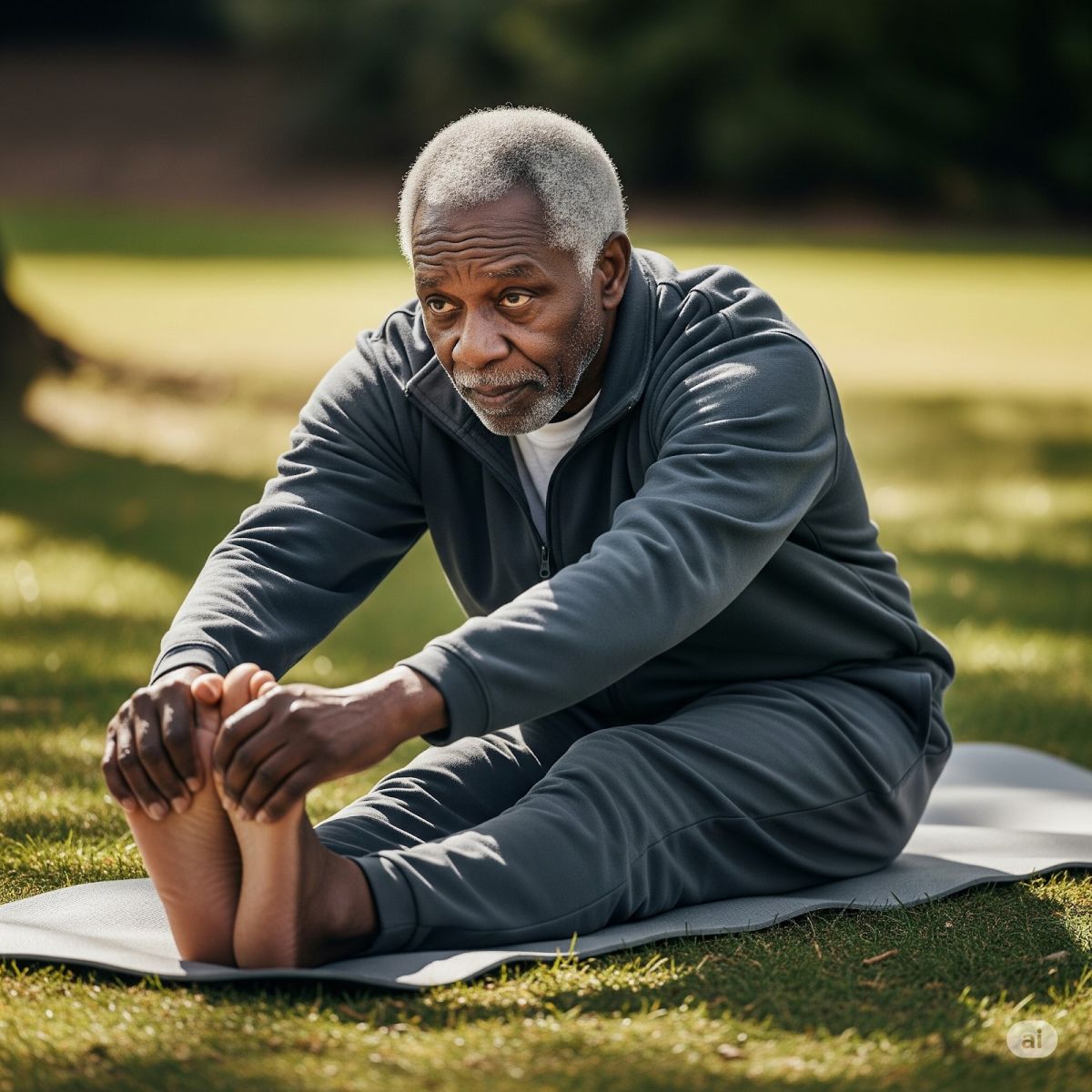
An elderly African man dressed in a grey sweat suit doing a hamstring stretch. Image generated from Gemini AI
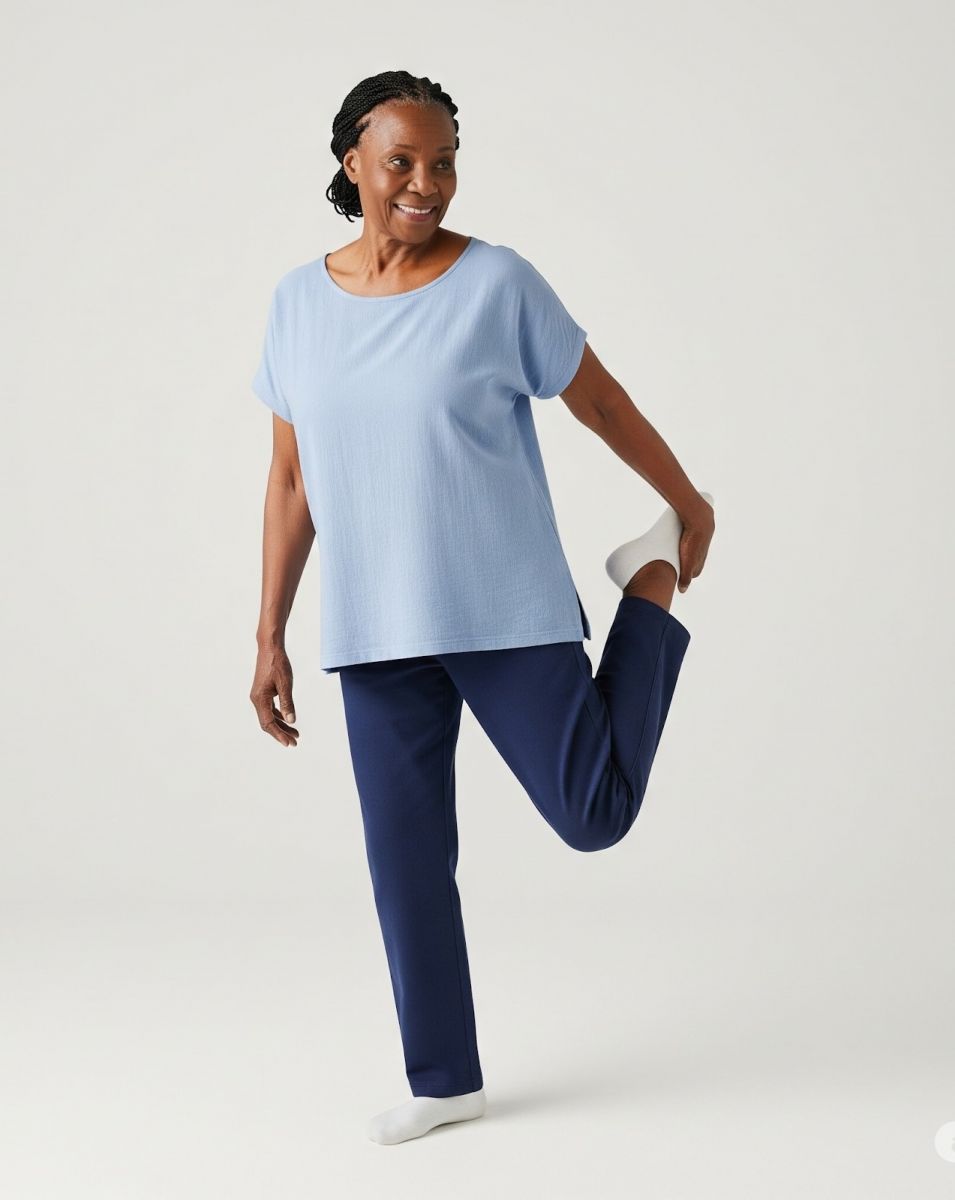
An older African woman dressed in a light blue shirt and dark blue pants, doing a quadriceps stretch. Image generated from Gemini AI
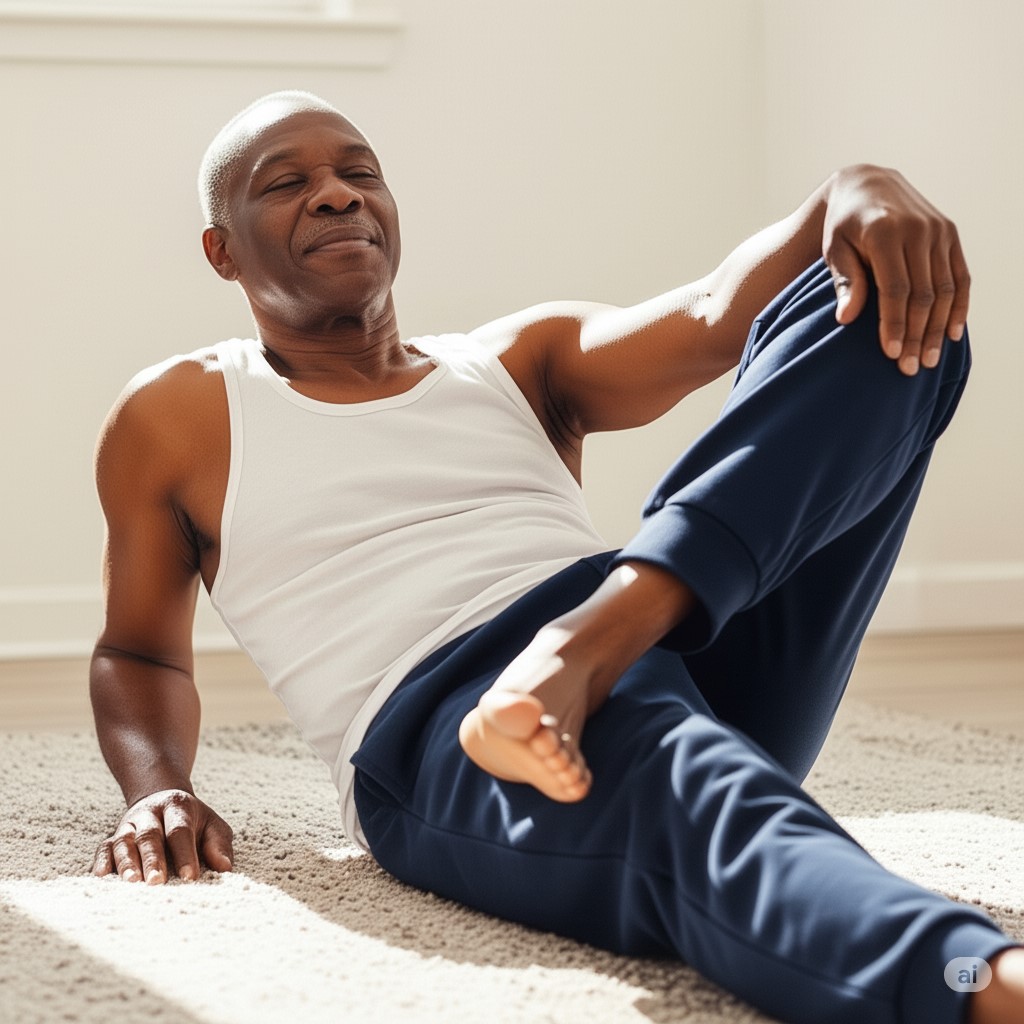
A middle aged African man wearing white tank top and blue sweatpants laying on the floor with one ankle crossed over the opposite knee. Image generated from Gemini AI
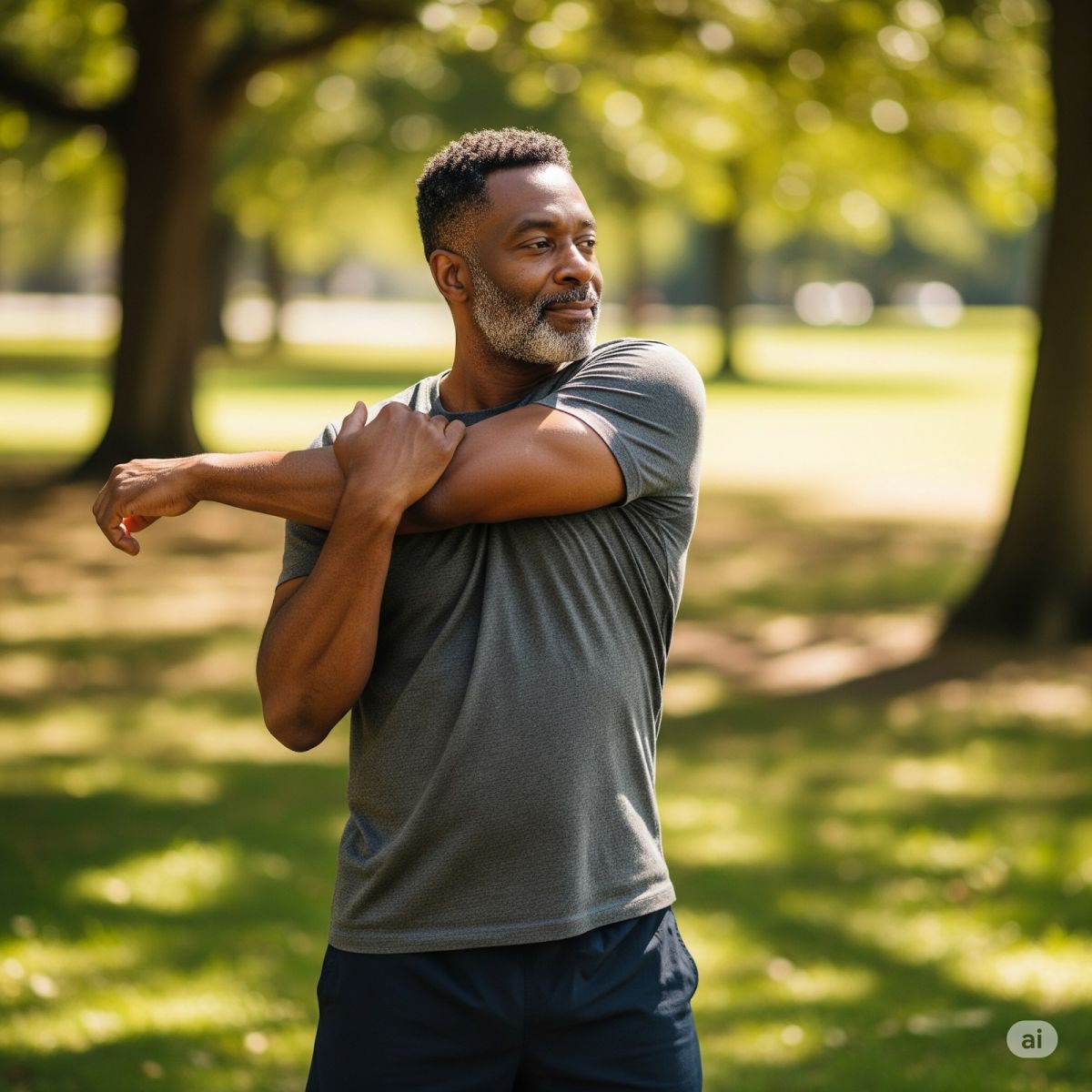
A middle aged man wearing a grey shirt doing a shoulder stretch. Image generated from Gemini AI
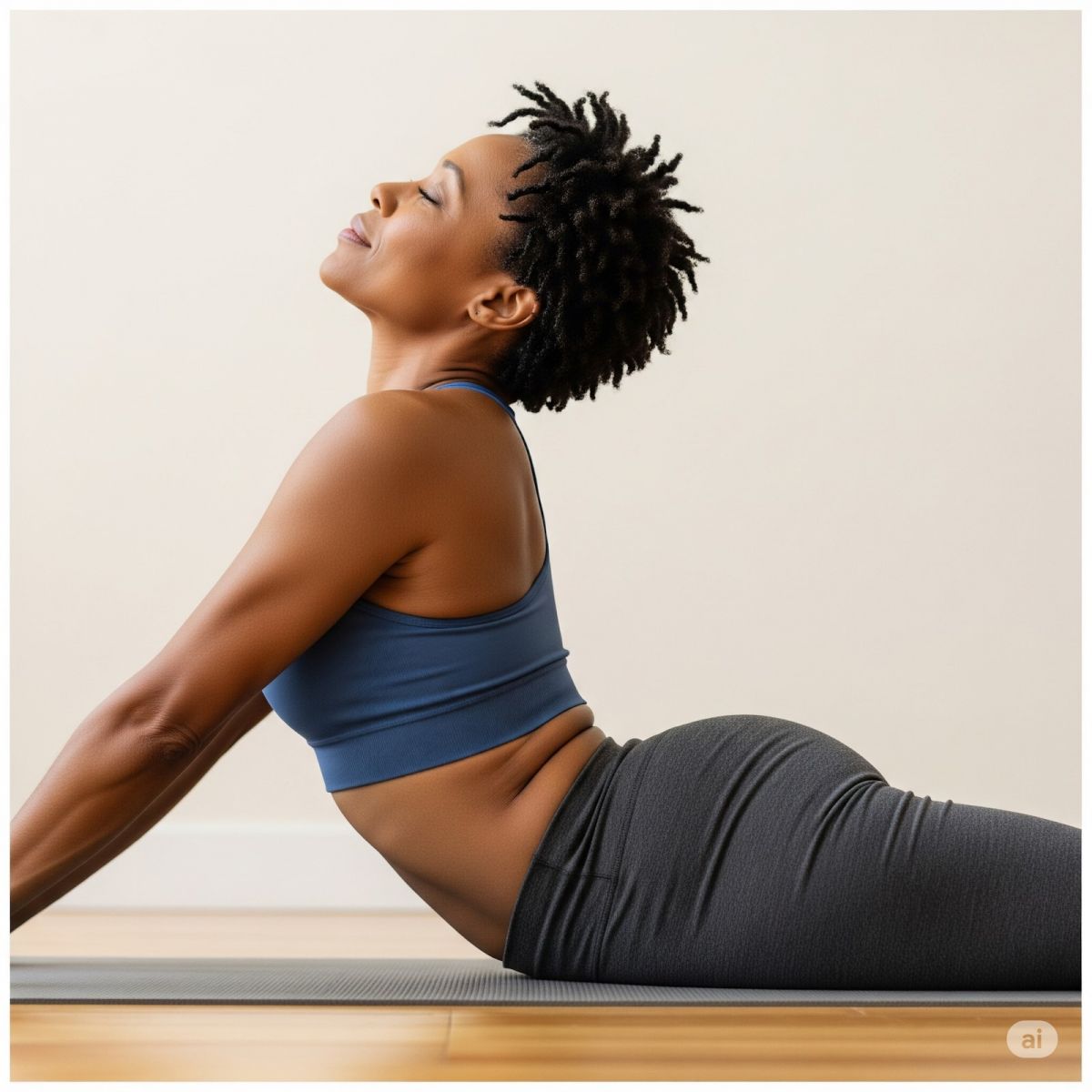
A middle aged African woman wearing a blue tank top and grey sweatpants doing a back stretch. Image generated from Gemini AI
Stretches can be integrated during short breaks from work, physically demanding chores, in the morning, and before bed.
Take regular short walks around your house, while running errands, and around your community. Other forms of movement practices that can improve mobility and flexibility include dance, which develops mobility, coordination, and overall fitness. Daily chores are also a great way of incorporating mindful movement and can be an opportunity for using the body efficiently through a good range of motion.
.jpg)
Partial view of a black lady wearing a whire vest performing strength training exercise with a dumbbell
Engaging in chair squats, light dumbbells for bicep curls, chest presses, carrying groceries, and gardening are great ways to build strength and contribute to functional fitness. Strength training is crucial for maintaining bone density and muscle mass. [1]
It is important to start these exercises from the simple to complex ones. Stay hydrated, and eat wholesome foods for muscle health and recovery. Ensure you take adequate rest to allow the body to recover and stay consistent. It’s more important to be consistent in sessions than intense in infrequent sessions.
Ultimately, the journey of ageing doesn't have to be filled with injuries, falls, or a loss of independence. By simply adding flexibility and mobility activities into the daily routines of older African adults, you can help them age gracefully and continue to live active, independent lives within their families and communities.
1. Mayer F, Scharhag -Rosenberger F, Carlsohn A, Cassel M, Muller S, Schar-hag J. The intensity and effects of strength training in the elderly. Dtsch Arztebl Int. 2011 May; 108 [21]: 359-64. Doi: 10.3238/arztebl.2011.0359. Available from here
Related:
Fall Prevention in Elderly Africans
7 Tips for Sustainable Exercise for Beginners in Africa
7 Practical Tips to Help African Stroke Survivors Regain Independence
Recommended Assistive Products for the Elderly and Stroke Survivors in Low Resource Countries
How to Deal with Joint Pains – Tips for Africans
Post-Stroke Rehabilitation Explained
Best Exercise for Healthy Ageing in Africans [Tips]
Published: July 18, 2025
© 2025. Datelinehealth Africa Inc. All rights reserved.
Permission is given to copy, use and share content for non-commercial purpose without alteration or modification and subject to source attribution.
DATELINEHEALTH AFRICA INC., is a digital publisher for informational and educational purposes and does not offer personal medical care and advice. If you have a medical problem needing routine or emergency attention, call your doctor or local emergency services immediately, or visit the nearest emergency room or the nearest hospital. You should consult your professional healthcare provider before starting any nutrition, diet, exercise, fitness, medical or wellness program mentioned or referenced in the DatelinehealthAfrica website. Click here for more disclaimer notice.